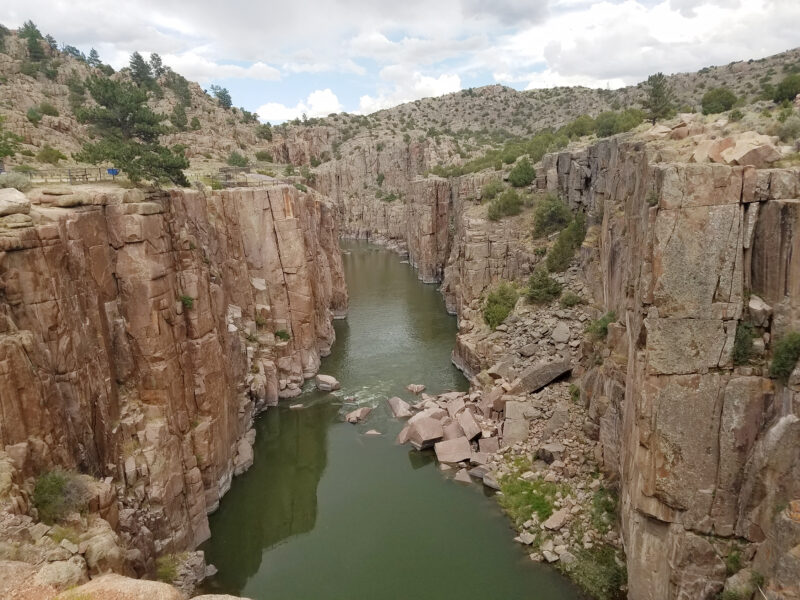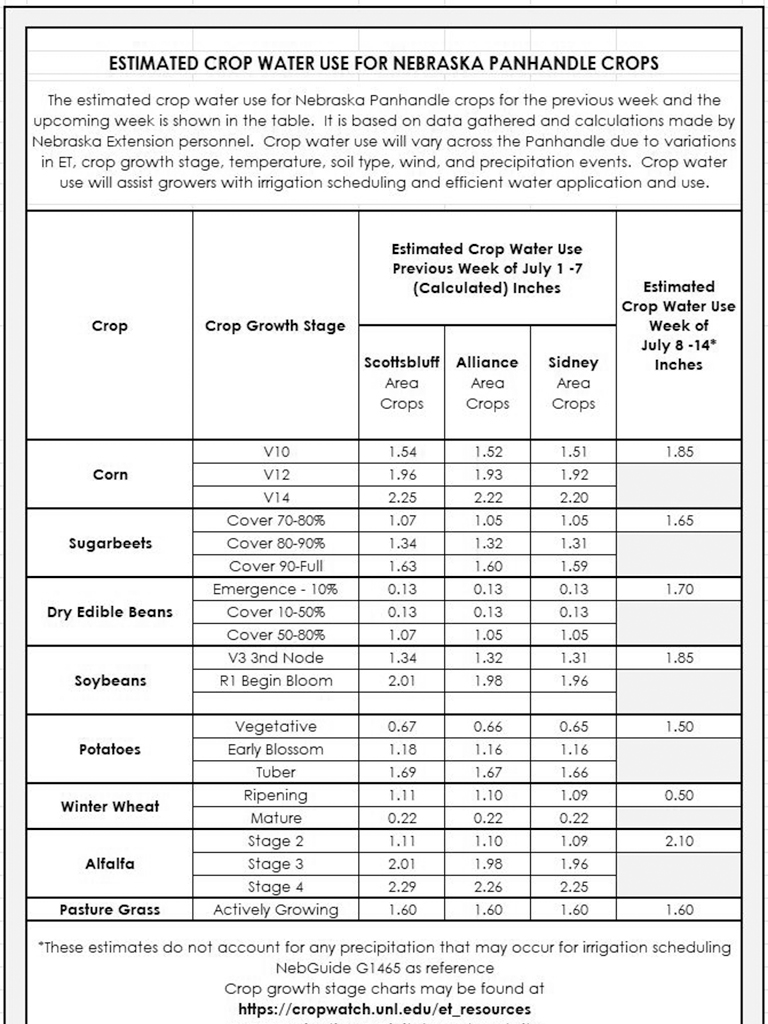![]()
By Chabella Guzman, PREEC communications / Gary Stone, Nebraska Extension educator
Temperatures will increase dramatically from July 10 to 15, with the National Weather Service in Cheyenne, Wyo. forecasting temperatures as high as 107 degrees in the Scottsbluff area before decreasing.
“Irrigators should try to keep their fields watered and minimize stress to the crop. I realize there are many acres to cover with limited amounts of water, but do the best you can,” said Gary Stone, Nebraska Extension Water and Cropping Systems Educator.

Hailstorms across the southern Panhandle have affected winter wheat yields, but the remainder of the crop looks good. Dry beans that were replanted have started to emerge, and other crops are doing well.
Irrigation water deliveries continue across the North Platte Valley, with Pathfinder and Goshen / Gering-Fort Laramie irrigation districts diverting approximately 1,600 cfs and 1,425, respectively.
To assist growers with monitoring their crop’s water profile is the – Estimated crop water use for July 8-14.

The table information includes the estimated crop water use for Nebraska Panhandle crops for the previous week and the upcoming week. The table is based on data gathered and calculations made by Gary Stone, Nebraska Extension educator, and Dr. Xin Qiao, Extension Irrigation and Water Management Specialist, both based at the UNL Panhandle Research and Extension Center in Scottsbluff.
Crop water use will vary across the Panhandle due to variations in ET, crop growth stage, temperature, soil type, wind, and precipitation events. Crop water use will assist growers with irrigation scheduling and efficient water application and use.
